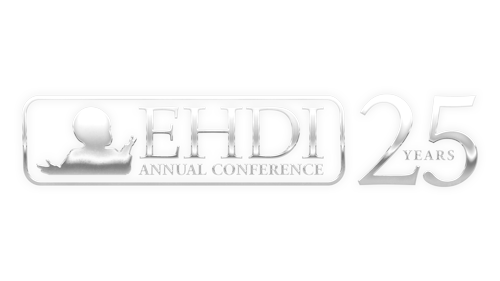2026 Early Hearing Detection & Intervention Conference
March 15-17, 2026 • Jacksonville, FL
3/14/2022 | 1:15 PM - 1:45 PM | Using the Deaf-Blind Child Count to Improve Identification | Room 12
Using the Deaf-Blind Child Count to Improve Identification
Children birth - 21 who are deaf-blind have unique needs that require specific interventions to create access and build foundational skills to achieve developmental outcomes and successful engagement in instruction. A large number of those who are deaf-blind are not identified as such and therefore do not have access to appropriate interventions and opportunities. NCDB is using the National Deaf-Blind Child Count and other information to draw attention to under identification through a range of efforts such as analyzing and using data to highlight disparities and needs, building collaborative relationships to improve identification, and producing information to raise awareness.
Deaf-blindness (combined vision and hearing impairment) has a profound impact on a child’s ability to access and develop communication, language, and concepts. It can also impede their ability to develop and maintain relationships with family, peers, and others in their lives. Proper identification is a critical first step in supporting infants and toddlers with the proper interventions and supports to meet their developmental needs. Compounding the already complex issues of identification is that approximately 87% of children and youth who are deaf-blind have additional and multiple disabilities. Limited research and a range of anecdotal information from professionals in the field suggests the prevalence of vision and hearing impairments in the population of individuals with multiple disabilities is significantly higher than currently reported.
Research into rates in subset population of individuals with multiple disabilities and comparison to known populations also support this notion. Lastly, children who are deaf-blind from culturally diverse backgrounds are undercounted to an even greater extent than those in the majority population. These data combined illustrate that there are potentially a significant number of individuals not receiving appropriate supports and services necessary to fully access and participate in home, school, and community settings.
- Participants will identify collaborative relationships that can be used to improve identification for children who are deaf-blind.
- Participants will learn about new data sources that would be helpful to improve identification.
- Participants will learn how this data is being used to drive improvements in identification of children who are deaf-blind.
Presentation:
3353554_15047EmmaNelson.pdf
Handouts:
Handout is not Available
Transcripts:
CART transcripts are NOT YET available, but will be posted shortly after the conference
Presenters/Authors
Marcia Fort
(Primary Presenter), NC DHHS, marcia.fort@ddhs.nc.gov;
Dr. Fort is the Genetics and Newborn Screening Unit Manager in the Whole Child Health Section of the North Carolina Division of Child and Family Well-Being and serves as the NC EHDI Coordinator. Marcia has worked with the NC EHDI program since 2002. Dr. Fort has 32 years of experience as a pediatric audiologist in hospital, private practice, ENT office and public school settings.
ASHA DISCLOSURE:
Financial -
Nonfinancial -
AAA DISCLOSURE:
Financial -
Nonfinancial -
